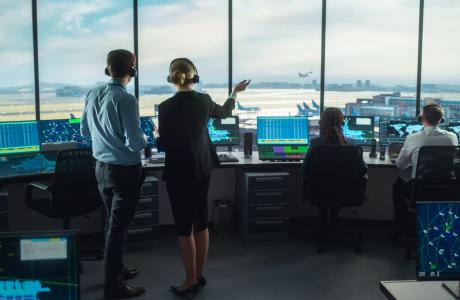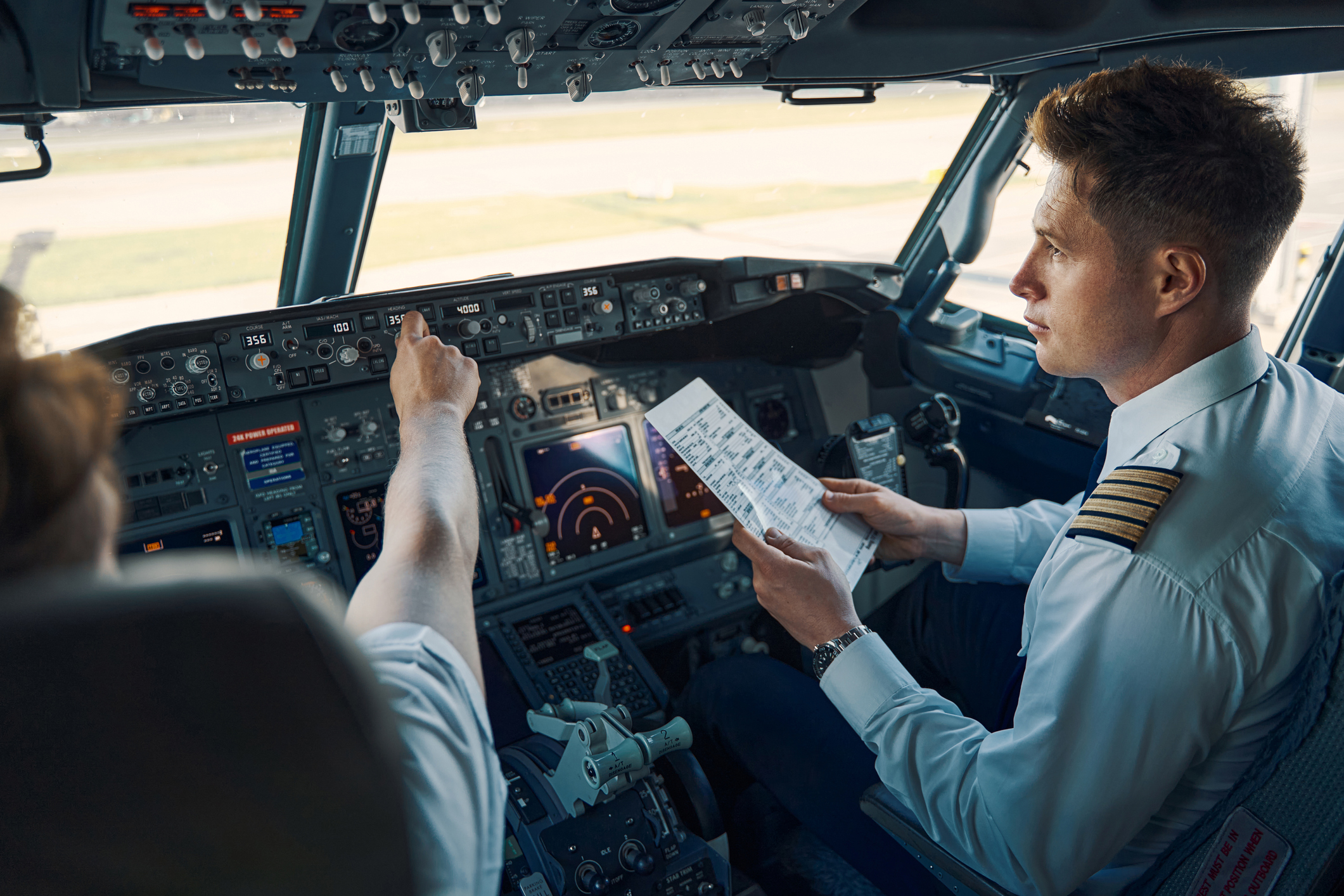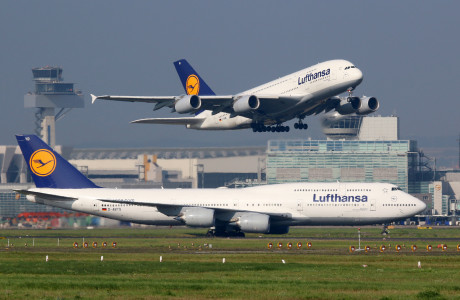
Air Traffic Control: How Air Traffic Is Regulated
Even if an aircraft is controlled in the cockpit, the decision on how high and where an aircraft may fly is often not made by the pilots. Instead, these decisions are made by air traffic control. After all, to ensure safe airspace and problem-free take-off and landing, it is essential that everything is precisely regulated. Aircraft and their routes must be coordinated with each other, and permission must be granted for the use of runways. Find out here how air traffic control ensures that everything works.
Contents
What are the tasks of air traffic control?
Wenn von der Flugsicherung gesprochen wird, denken viele vor allem an die sogenannte Flugverkehrskontrolle, die Ground Control, Tower Control, Clearance Delivery und Air Traffic Control (ATC) umfasst. Diese ist aber nur ein Teilbereich der Flugsicherung. Darüber hinaus gibt es auch folgende Aufgaben:
Aeronautical Information Service
The aeronautical information service (AIS) already takes place in the run-up to a flight. On a more general level, this includes the provision of aeronautical charts and manuals. However, the aeronautical information service also receives all flight plans and evaluates or passes on the relevant data. In addition, it compiles the so-called notice to airmen (NOTAM), i.e. information that may be relevant for an upcoming flight. This can include things like the status of the airfields or warnings about unlit obstacles on the flight route.Flight Information Service
The Flight Information Service (FIS) provides relevant information during the flight, for example about the weather and traffic in a particular airspace. Pilots can either specifically request the flight information service or listen to radio broadcasts on dedicated frequencies, which transmit general up-to-date information for a specific airspace.

Before Take-Off, After Landing: Ground Control
Ground control is responsible at the beginning and end of every flight. Also known as taxi control in German-speaking countries, it is primarily responsible for the airfield's taxiway. This includes the taxiways and holding areas, but not the runways themselves. Ground control issues clearances not only to aircraft, but also to all apron vehicles and persons in this area - otherwise the controlled areas may not be entered.
Take-Off and Landing: Tower Control
Airfield control, known as tower control after the control tower, is responsible for the runways. Accordingly, it issues the respective take-off and landing permits to aircraft. It also issues instructions if it is necessary for an aircraft to abort a landing and join a new queue. Accordingly, it must work closely and in a coordinated manner with both ground control and air traffic control to ensure that air traffic runs smoothly, especially at busy airports.
By the way: The name tower control has only limited meaning, as other parts of air traffic control can also be housed in the tower. It is also possible that Tower Control is not physically located near the airport, but remotely. You can read more about this in our article on the airport tower.
Route Release: Clearance Delivery
Clearance delivery plays an intermediate role in the process. It takes place before the actual take-off. Here, the planned route of the aircraft is confirmed and a clearance for this is issued in coordination with air traffic vontrol. Failure to obtain clearance from clearance delivery often results in an aircraft waiting on the tarmac. Reasons for this include unsuitable weather conditions or currently blocked airspace.
During The Flight: Air Traffic Control
The actual flight route is then monitored by air traffic control. It ensures that an aircraft adheres to the approved route as well as specifications regarding altitude and speed. This part of air traffic control also decides on any changes to the route if, for example, the weather deteriorates unexpectedly or the airspace to be flown through is blocked, e.g. by delayed other flights.
By the way: It is not always possible to fly around thunderstorms. This can lead to turbulence in the aircraft. However, modern aircraft are well equipped to deal with this, as you can find out in our article How safe is flying?

How is air traffic control organized?
In Germany, Deutsche Flugsicherung (DFS) in Langen is the central authority for air safety. As DFS is a limited liability company and therefore an entrusted (i.e. not a state-owned) company, it is also controlled by the Federal Supervisory Authority for Air Navigation Services. To improve coordination, however, efforts are being made to standardize and largely consolidate air traffic control through a Europe-wide organization called EUROCONTROL. In many countries, air traffic control is partly or completely provided by military personnel in order to better coordinate public and private air traffic.
The tasks of air traffic control are therefore complex, but also very precisely organized and meticulously planned to ensure that everything runs as smoothly as possible. Accordingly, we wish you relaxed air travel at all times.



